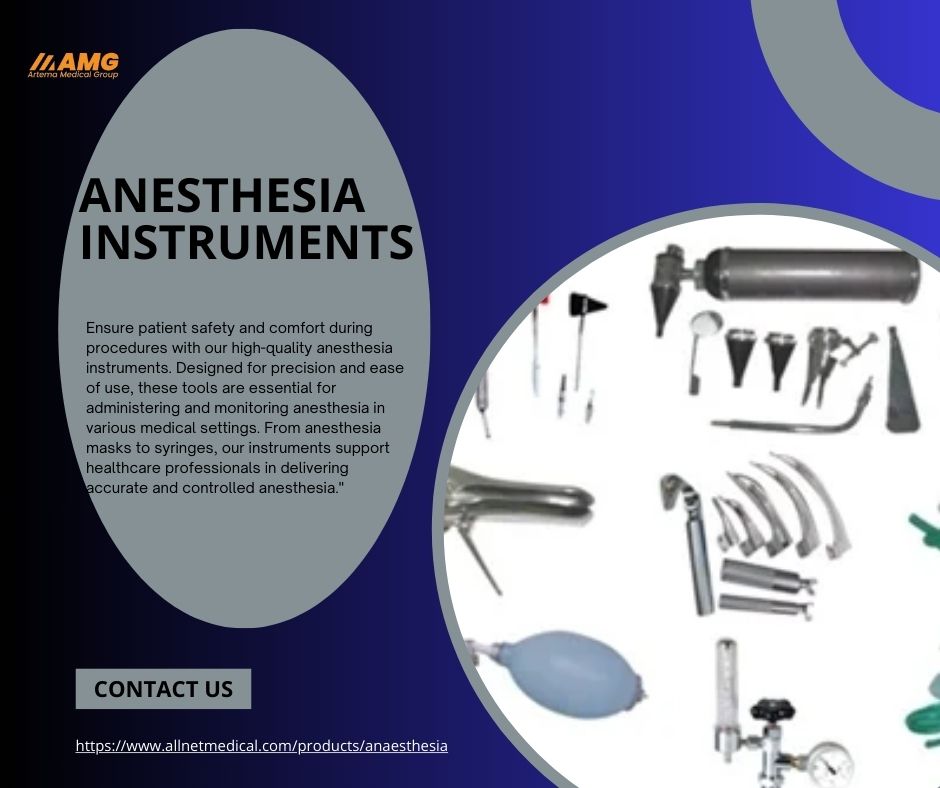
Introduction
Anesthesia instruments are essential components of modern medical practice, playing a crucial role in ensuring patient safety and comfort during surgical and other invasive procedures. These instruments enable the precise administration of anesthetics, the maintenance of vital functions, and the careful monitoring of patients throughout their medical treatments. This article explores the various roles anesthesia instruments play in healthcare, highlighting their importance in different medical settings.
The Fundamental Role of Anesthesia Instruments
Administering Anesthetics
One of the primary roles of anesthesia instruments is to administer anesthetic agents to patients. These instruments ensure that anesthetics are delivered in the correct dosage and at the right rate, depending on the specific needs of the procedure and the patient. Anesthesia machines, for instance, are designed to deliver a controlled mixture of gases, including oxygen and anesthetic agents, to maintain the patient in an unconscious and pain-free state during surgery.
Ensuring Patient Safety
Anesthesia instruments are vital in ensuring patient safety throughout surgical procedures. They are used to monitor the patient’s vital signs, such as heart rate, blood pressure, and oxygen levels, providing real-time data that allows anesthesiologists to make immediate adjustments as needed. Pulse oximeters, capnographs, and electrocardiograms (ECGs) are some of the critical tools used to continuously assess the patient’s condition and respond to any changes that might occur during surgery.
Maintaining Airway Patency
Maintaining an open airway is a critical responsibility during anesthesia, and specialized instruments are used to achieve this. Laryngoscopes, endotracheal tubes, and laryngeal masks are key tools that help secure the patient’s airway, ensuring that they can breathe properly while under anesthesia. This is especially important in surgeries where the natural airway may be obstructed or compromised.
The Role of Anesthesia Instruments in Different Medical Specialties
General Surgery
In general surgery, anesthesia instruments are used to facilitate a wide range of operations, from minor procedures to complex surgeries. These instruments help administer general anesthesia, maintain vital signs, and ensure that the patient remains stable and pain-free throughout the operation. The ability to closely monitor the patient’s physiological status is crucial for the success of any surgical procedure.
Cardiovascular Surgery
In cardiovascular surgery, anesthesia instruments play a particularly critical role due to the complexity and risk involved in these procedures. Advanced monitoring devices, such as transesophageal echocardiograms and arterial lines, are used to track the patient’s heart function and blood flow in real time. These instruments provide anesthesiologists with the information they need to make quick decisions and maintain the patient’s stability during highly delicate surgeries.
Obstetrics and Gynecology
In obstetrics and gynecology, anesthesia instruments are used during childbirth and various gynecological procedures. Epidural anesthesia, commonly used during labor, requires the use of specialized needles and catheters to deliver anesthetic agents to the epidural space. These instruments ensure that pain is effectively managed during delivery while minimizing risks to both the mother and the baby.
Emergency Medicine
Anesthesia instruments are also crucial in emergency medicine, where rapid and effective intervention is often necessary. In emergency settings, tools such as laryngoscopes, endotracheal tubes, and portable anesthesia machines are used to quickly secure the airway and administer anesthetics in critical situations. These instruments enable medical teams to stabilize patients who are in life-threatening conditions, ensuring they receive the urgent care they need.
Pediatric Surgery
Pediatric surgery requires anesthesia instruments specifically designed for children, as their physiological needs differ significantly from adults. Smaller-sized endotracheal tubes, masks, and monitoring devices are essential for safely administering anesthesia to young patients. These instruments play a vital role in ensuring that pediatric surgeries are performed safely and with minimal risk to the child.
Advanced Roles of Anesthesia Instruments
Pain Management
Beyond their use in surgery, anesthesia instruments also play a key role in pain management for patients with chronic conditions. Techniques such as nerve blocks and spinal cord stimulation require specialized needles, catheters, and stimulators to deliver pain relief. These instruments are used in a variety of settings, from outpatient clinics to pain management centers, helping patients manage chronic pain and improve their quality of life.
Non-Surgical Procedures
Anesthesia instruments are not limited to surgical applications; they are also used in non-surgical procedures that require sedation. For example, during endoscopies or radiological imaging, sedation can be administered using intravenous delivery systems, ensuring that patients remain calm and comfortable. These instruments are crucial for making non-surgical procedures less invasive and more tolerable for patients.
Research and Innovation
Anesthesia instruments also play a role in medical research and innovation. The development of new anesthetic techniques and the improvement of existing ones rely heavily on advanced anesthesia equipment. Instruments such as computer-controlled anesthesia delivery systems and real-time monitoring devices enable researchers to explore new ways to enhance patient care and safety during medical procedures.
Conclusion
The role of anesthesia instruments in modern medicine cannot be overstated. From administering anesthetics and ensuring patient safety to facilitating complex surgeries and managing chronic pain, these instruments are integral to the successful delivery of healthcare. As medical technology continues to evolve, the development of more advanced anesthesia instruments will further enhance their role in improving patient outcomes and expanding the possibilities of medical treatment. Whether in the operating room, emergency department, or research lab, anesthesia instruments are essential tools that contribute to the advancement of medicine and the well-being of patients worldwide.For more information: Allnet